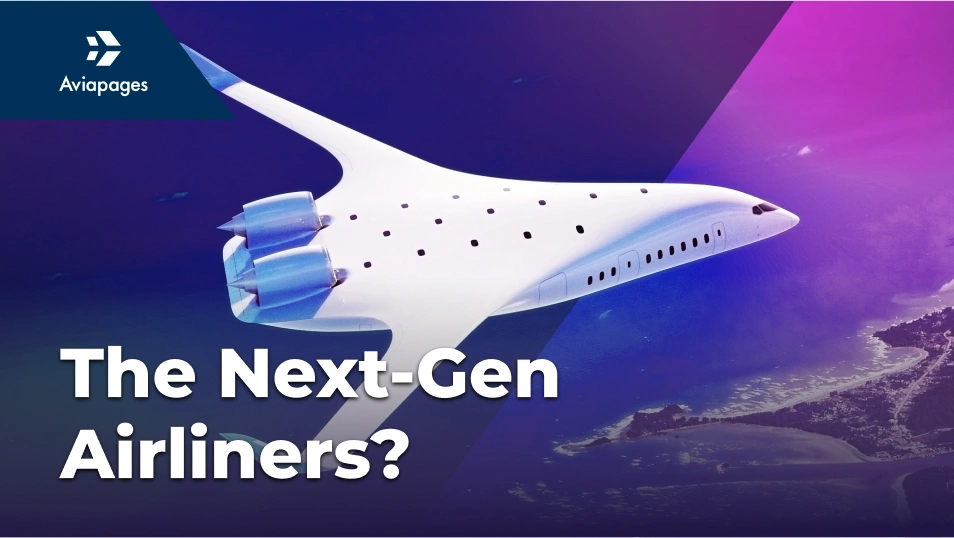The Dawn of a New Era in Air Travel with Blended Wing Aircraft
In recent years, the aviation industry has been on the brink of a monumental shift, with blended wing body (BWB) aircraft emerging as the frontrunners of this transformation. These aircraft, characterized by their seamless integration of wings and fuselage, promise not only to redefine our perception of airplanes but also to significantly enhance flight efficiency and environmental sustainability.
This video delves into the world of blended wing aircraft, exploring their unique design, advantages, and the future they hold for air travel.
Understanding Blended Wing Body Aircraft
Blended wing body aircraft represent a departure from traditional airplane designs, merging the wings and body into a single, smooth shape. This design minimizes the distinction between the fuselage and wings, creating an aircraft that looks more like a sleek bird or a futuristic spacecraft than the tube-with-wings configuration we've grown accustomed to. The origins of this concept trace back to early aviation experiments, but it's only in recent years that technological advancements have allowed these ideas to take flight.
A Storied Past: The Evolution of BWB
Early BWB Innovations and NASA's Pioneering Research

The idea of a blended wing body design dates back to the early 20th century, with notable experiments like the Westland Dreadnought in the 1920s and the McDonnell XP-67 in the 1940s. However, it was NASA's collaboration with McDonnell Douglas in the 1990s that truly set the stage for the BWB's future. Their joint effort produced the BWB-17 model, demonstrating favorable handling qualities and fuel efficiency that laid the groundwork for future developments.

Airbus, ZEROe, and the EcoJet
In the 21st century, Airbus emerged as a key player in BWB research with its MAVERIC program and the unveiling of the ZEROe initiative, aiming to halve CO2 emissions by 2050. Similarly, Bombardier's announcement of the EcoJet project underlines the industry's commitment to leveraging BWB designs for environmental and efficiency gains.

The Science Behind the BWB Efficiency
At the heart of the blended wing aircraft's appeal is its unparalleled efficiency. The BWB design significantly reduces aerodynamic drag, allowing the plane to cut through the air more smoothly and with less resistance. This efficiency translates to a host of benefits:
Fuel Savings: BWB aircraft can achieve fuel savings of over 20% compared to conventional designs, a game-changer for an industry under pressure to reduce carbon emissions.
Increased Range and Payload: The aerodynamic efficiency also means BWB planes can fly longer distances on the same amount of fuel or carry more cargo or passengers.
Noise Reduction: The design contributes to quieter operation, reducing the noise footprint of airports and improving the quality of life for those living nearby.
Navigating the Challenges
Despite their promise, blended wing body aircraft are not without their challenges. Key issues include:
Evacuation Procedures: The unique layout may complicate emergency evacuations, necessitating creative solutions for safety.
Passenger Comfort: The absence of windows and potential discomfort during maneuvers are concerns that need addressing.
Airframe Complexity: The BWB's design complexity poses challenges in flight control and stability.
Yet, with every challenge comes innovation. Engineers and designers are tirelessly working to devise solutions, from advanced flight control systems to innovative cabin layouts that ensure safety without compromising the BWB's efficiency benefits.
The Future of Flight with Blended Wing Body Aircraft
As we look toward the future, it's clear that blended wing body aircraft hold a promising place in the quest for greener, more efficient air travel. With companies like Airbus, Boeing, and emerging startups pushing the envelope, we're on the cusp of a revolution that could see these futuristic planes become a common sight in our skies. The journey from concept to commercial reality is fraught with hurdles, but the potential rewards for our planet and the way we travel are immense.
In conclusion, blended wing aircraft are not just a glimpse into the future of aviation; they're a testament to human ingenuity and the relentless pursuit of improvement. As we continue to innovate and overcome the challenges, the dream of flying in these incredible machines becomes ever more a reality, promising a horizon that's not only more efficient but infinitely broader.
You can use our Private Aviation Companies Directory if you need information on aviation companies. For example, if you need information on the Atlas Air Charter Operator."


